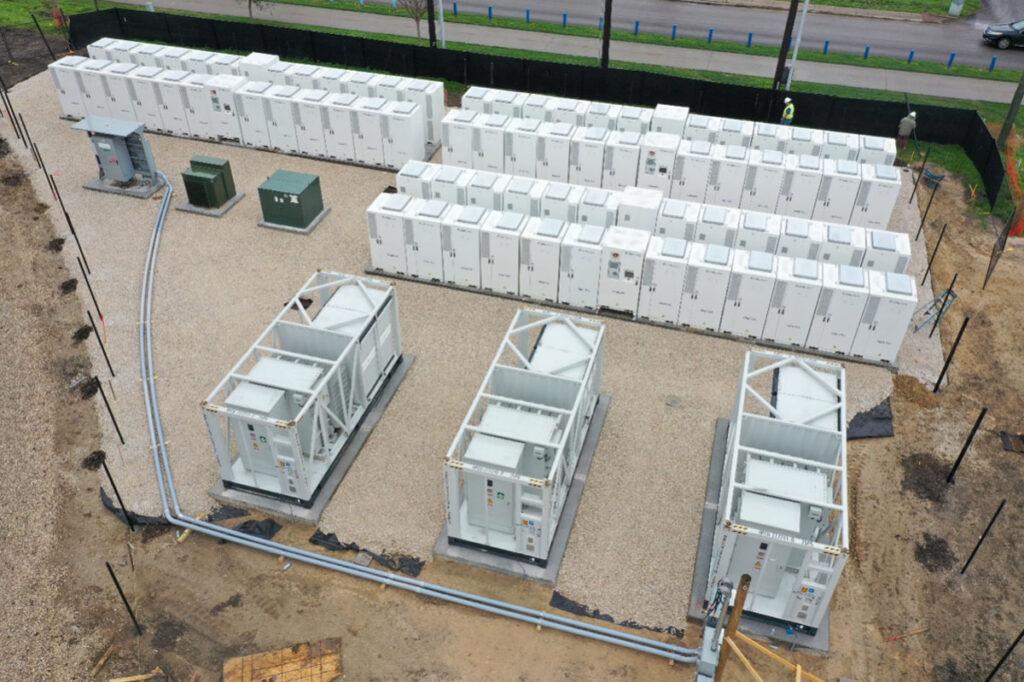Microgrids: Sustainable Power Solutions Revolutionizing Energy Infrastructure
Share this post:

Microgrids
As technology advances and electric vehicles (EVs) become more popular, concerns about consumer power demand are growing and what that might do to the centralized grid. Alongside an increased government focus on renewable energy, there is a pressing need for innovative solutions to manage and meet the rising energy demands of modern society. Microgrids are the answer to these challenges providing an ‘energy insurance’ that enables flexible, sustainable, and cost-effective power solutions with limited boundaries on location.
Microgrids use various forms of distributed energy resources (DERs) such as solar panels or generators combined with storage solutions like batteries to establish an independent electrical network. This allows for electricity to be produced in a form of local energy that is ready for use when you need it most. The key word being local, this is different from the main centralized grids that have provided power across North America for the last century. Electricity from the central grid is typically produced from power plants utilizing transmission and distribution lines to provide power across the country. Distributing this power over long distances far from its original source can result in losses of up to 15%. Microgrids utilizing local energy generation can mitigate these losses significantly with the ability of the energy source to be located much closer to the end user.
Distributed Energy Resources (DERs)
It is important to understand the difference between distributed energy resources (DERs) and Microgrid systems. DERs are referred to as the individual systems that make up a Microgrid, for example: solar panels, generators, and wind energy. Distributed energy resources are constantly advancing resulting in lower installation costs, efficiency increases, and greater accessibility. Although beneficial on their own, combining a network system of these resources into a single system creates a robust solution with an increase in efficiency that could not be accomplished individually, a Microgrid. If the grid were to experience an outage a Microgrid can keep power flowing to the consumer, while a single distributed energy resource cannot.
The Intelligence of a Microgrid
Microgrids represent sophisticated technological systems that offer numerous advantages for both investors and everyday energy users. These systems can either be connected to the grid to support reliability or disconnected allowing for the system to act independently. While the option exists to operate independently from the grid, many systems choose to remain connected with the ability to switch in the event of a grid outage, such as bad weather. What makes the system intelligent is the set of control systems that can manage, store, charge, and discharge the entire system at any given time. These controls can be programmed to monitor the supply vs demand of power being pulled from the central grid and the real-time cost of power on the market. While monitoring, if the control system detects low energy prices, it can switch to purchasing power from the grid to supplement the consumer's needs while using battery systems to store self-generated power from solar panels for future use. Subsequently, the controller can discharge these batteries when prices increase, ensuring stable energy costs for the consumer. The system also has the ability to operate autonomously, ensuring an uninterrupted power supply even during grid outages or disruptions. This autonomy enhances resilience, energy security, and efficiency. Combined with the integration of renewable energy sources, Microgrids can offer flexibility in energy management all while keeping the consumer's wallet in mind.

Conclusion
In conclusion, Microgrids are shaping the way we think about energy reliability. With the ability to integrate renewable energy, act autonomously, and provide support for the central grid these solutions are set to play a role in shaping the future of energy infrastructure. Adopting this type of technology allows for increased energy security while also paving the way toward a cleaner and more robust energy support system.
written by:
Cooper Hoefling
Director of Sales

